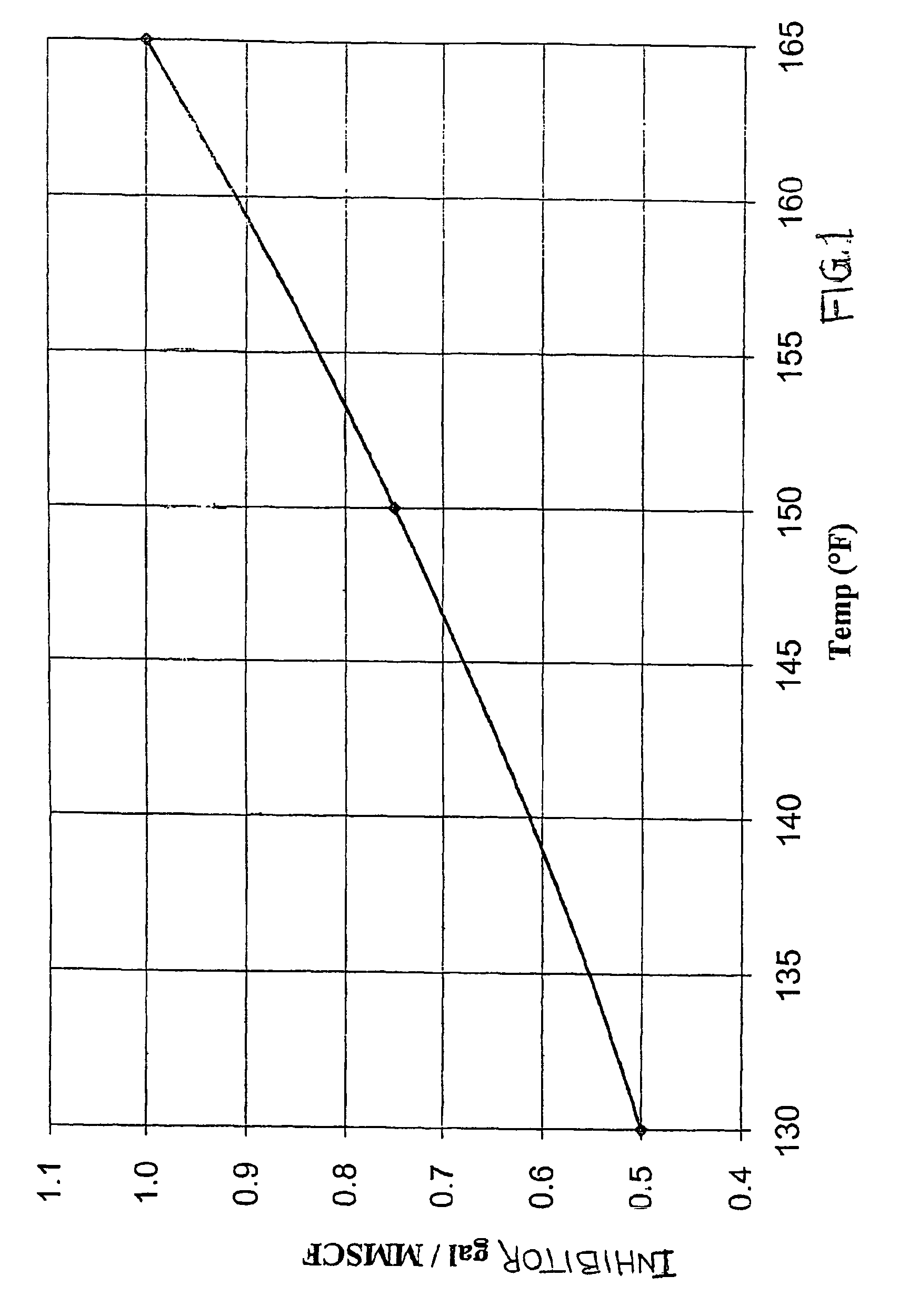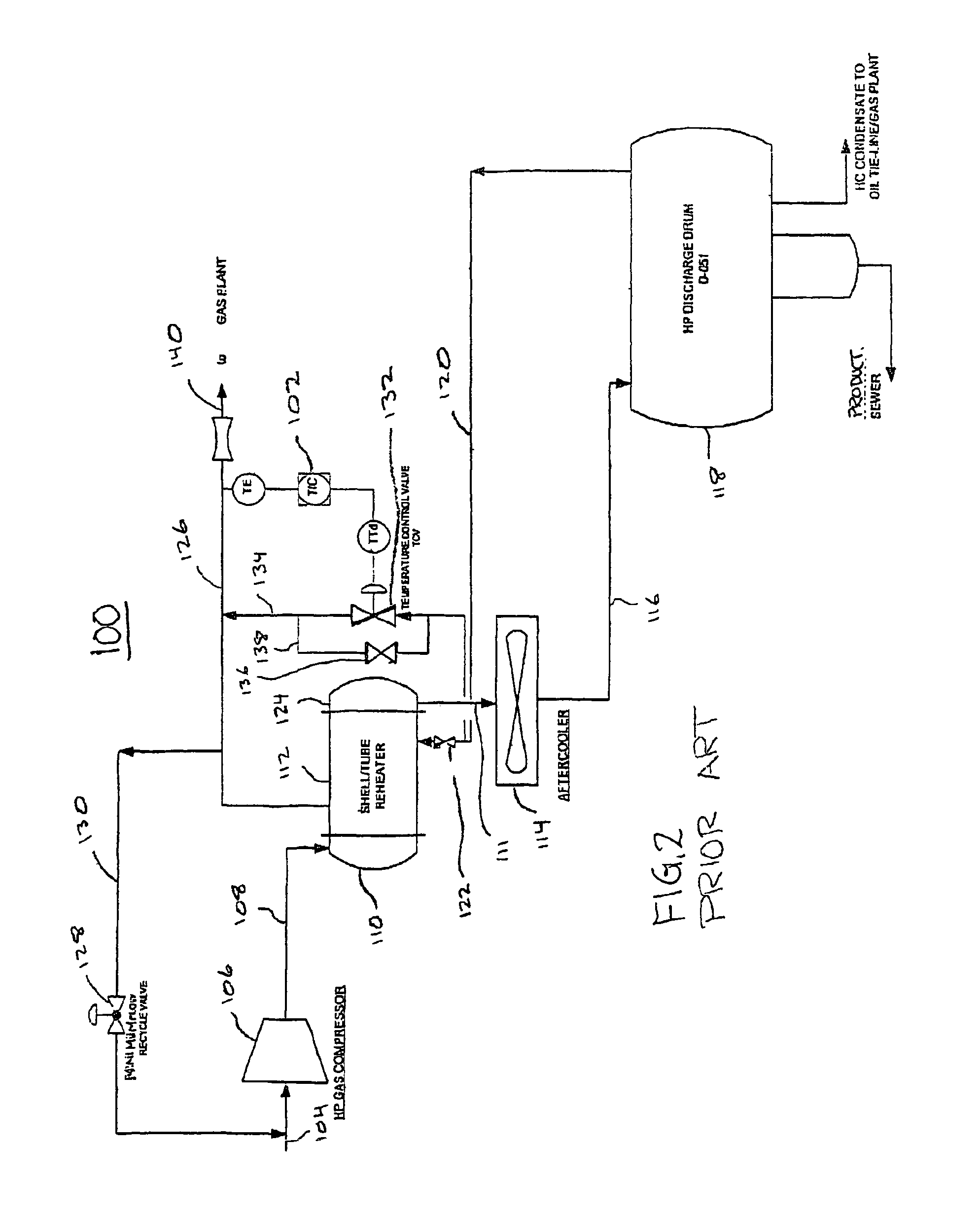Controlled superheating of natural gas for transmission
a transmission and natural gas technology, applied in the direction of ratio control, multi-way valve, container discharging from pressure vessels, etc., can solve the problem that the fluid steam in the pipeline system cannot be maintained in the single-phase dry gas mode 100% of the time, shorten the life of the tape wrap, and reduce the cost of the external pipe wrap tape, so as to improve the reliability and accuracy of the dosage. , the effect of reducing the cos
- Summary
- Abstract
- Description
- Claims
- Application Information
AI Technical Summary
Benefits of technology
Problems solved by technology
Method used
Image
Examples
example
[0061]One week prior to the evaluation of the process of the invention, data collection was initiated at the six GOSPs and the GP test facilities for the purpose of comparing the conditions at the existing final gas temperature of 165° F. with the conditions of the superheat reduction process in accordance with the invention. The superheat reduction was started by reducing the exiting gas temperature setting from 165° F. to 130° F. at the six GOSPs feeding one separate pipeline network. This pipeline network terminated at a designated slug catcher drum at the gas plant. The object of the test was to quantify the amount of liquid removed from the pipeline at the gas plant. The protocol was conducted twice: first under desert summer conditions and then under desert winter conditions.
[0062]Four types of process data were gathered:
[0063]1. The amount of liquid collected at the GP slug catchers and its effect on GP operations.
[0064]2. The minimum superheat that GOSPs' operation must main...
PUM
 Login to View More
Login to View More Abstract
Description
Claims
Application Information
 Login to View More
Login to View More - R&D
- Intellectual Property
- Life Sciences
- Materials
- Tech Scout
- Unparalleled Data Quality
- Higher Quality Content
- 60% Fewer Hallucinations
Browse by: Latest US Patents, China's latest patents, Technical Efficacy Thesaurus, Application Domain, Technology Topic, Popular Technical Reports.
© 2025 PatSnap. All rights reserved.Legal|Privacy policy|Modern Slavery Act Transparency Statement|Sitemap|About US| Contact US: help@patsnap.com



